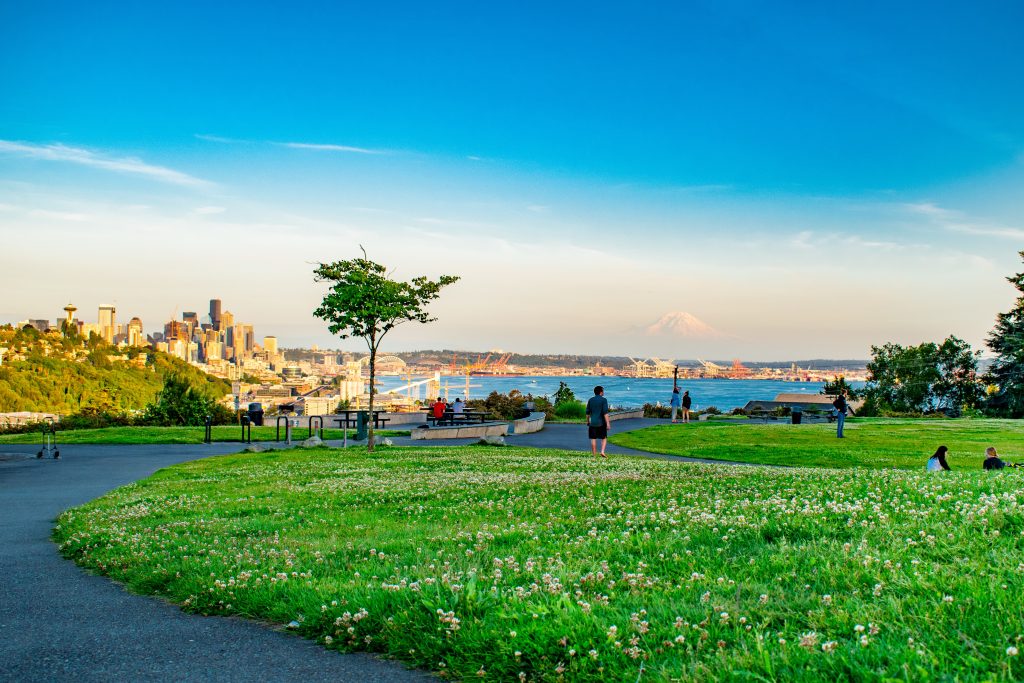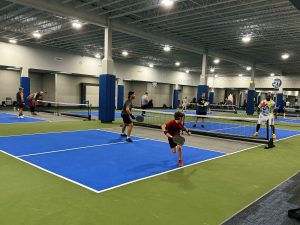Guest post written by Cameron Connelly, Content & Research Coordinator, The Sports Facilities Companies.
When the famed landscape architect and urban park designer, Frederick Law Olmsted, created his first park, the goal was to create a green space for people to use to escape from the city and their busy lives. The purpose of parks hasn’t changed much since then. But the way that cities design and manage parks does sometimes evolve. Whether it is the piece of land that they are using, the technology being used to manage it, or the people it is designed to serve, parks are becoming better every day. This article will cover some of the parks and recreation trends that are popular this year.
Transforming Old Eyesores
Taking an abandoned or underutilized lot and turning it into a park is something that cities have been doing for a long time. But recently, cities have needed to get more creative with their parks since there is less and less space where they can go. An innovative solution to this problem that also takes advantage of the many unused railroad and subway tracks across the country are the railway parks that have gained a lot of popularity over the last decade. The first to ever do it was the Promenade Plantée in Paris, France back in 1993. It is an elevated park walkway that is built on the abandoned viaduct that travels through the city. It was the only park of its kind until 2009 when New York City started building their rendition called the High Line. Both parks have been a huge success and have motivated other cities to implement similar parks on their unused railways. Now there seems to be a new railroad park project being announced every year in cities across the globe. And if your city doesn’t have any tracks to transform, think about converting a parking lot, bridge, or landfill to be your next beautiful park.
Smarter Water
The world has become increasingly aware of the importance of greenspace in our communities and in our lives. But keeping the grass, flowers, and trees in our parks alive and full of color requires a lot of water and maintenance. There are now a number of companies that offer solutions to both of those problems using smart irrigation. HydroPoint, a smart irrigation company based in California, found that the United States uses nine billion gallons of water every day for outdoor use like landscape irrigation and nearly 50 percent of that water is wasted because of overwatering and inefficiencies in irrigation methods and systems. To help lower the percentage of water that is wasted, HydroPoint offers smart solutions for everything from irrigation systems to flow monitoring services. Each of their products is designed to improve the efficiency of irrigation systems and lower costs for their clients which also reduces the amount of water that gets wasted. They advertise that their solutions are able to pay for themselves after 24-36 months with the amount they can save you on water bills. These smart irrigation systems are a huge help to individuals, businesses, and municipalities alike and the more places that they are implemented, the more help it does for the world’s water supply.
Diversity, Equity, and Inclusion
An important trend that has been in the spotlight for several years and will continue to be worked on for years to come is a focus on diversity, equity, and inclusion (DEI). It isn’t something that can happen overnight. It requires a solid foundation and consistency to build it up and maintain it. The National Recreation and Park Association (NRPA) conducted a research report in 2021 that found that 34 percent of parks and recreation agencies currently have DEI programs, 32 percent of agencies plan on having DEI programs in the next year, and the remaining 34 percent don’t currently have plans to implement DEI programs in the future. These numbers are slightly concerning considering how much work needs to happen even after a DEI program is implemented. The reassuring data from the report is that despite only 34 percent of agencies having a formal DEI program, virtually all the agencies practice some sort of DEI activity or policy. So, if your parks and recreation department doesn’t have a DEI program in the works, consider implementing one or consider expanding the current DEI policies. DEI policies can be used to impact hiring practices, staff education, community engagement, recreational programming, volunteer recruitment, and many other activities. It is okay to start small as long as you continue to focus on improving the diversity, equity, and inclusion of your parks and your departments.
Pay attention to your community to see if there are any abandoned lots that could be parks, irrigation systems that could use an overhaul, or programs and departments that can improve their DEI practices. Parks and recreation programs and departments are there to improve the lives of the people in the communities that they serve so it is only right that the communities they serve also help to improve the parks. The Sports Facilities Companies works to help improve communities through sports and recreation and if you are looking to bring better health and economic vitality to your community, please contact us or give us a call at (727) 474-3845.






